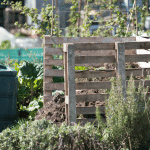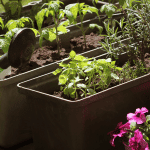12 Ways To Maximise Space & Yield In A Small Greenhouse
Maximising your space and plant yield in a small greenhouse can be a challenge, but with the right techniques, it is possible to grow an abundance of fresh produce and flowers in even the smallest of spaces. Whether you are an experienced gardener or just starting out, these top 12 tips will help you get the most from your greenhouse, whatever its size.
One: Be Selective With Your Growing
Consider the amount of light and temperature your greenhouse can provide and select plants that are well-suited for these conditions. Tomatoes, peppers, and cucumbers are popular choices for small greenhouses as they are compact and produce a high yield. Leafy greens such as lettuce, spinach, and kale are also great options as they do not take up much space and grow quickly.
Two: Use The Vertical Space To Your Advantage
Don’t forget that you can utilise the full height of your greenhouse and grow upwards. Installing shelves, hanging baskets, or trellises for tall-growing vine plants such as tomatoes and cucumbers will free up valuable floor space and increase the overall yield of your greenhouse.
Three: Incorporate Technology
Hydroponics systems are an effective way to maximize space and yield in a small greenhouse. These systems allow you to grow plants in water instead of soil, and they can be set up in a small footprint, making them ideal for small greenhouses.
Four: Utilise Space In The Home
Starting seeds indoors in a controlled environment is a great way to maximise your space and yield in the greenhouse. You can start seeds in pots inside the house first, saving precious space in the greenhouse to start with, and later transplant them into the greenhouse or garden when they have developed strong roots. This will give you a head start on the growing season and help you make the most of your space. Areas of the home such as front-facing windowsills, in the porch, or in a conservatory all make great places to add a seed tray or two.
Five: Companion Planting
Companion planting is a great way to maximise space and yield in a small greenhouse. This technique involves planting different crops in close proximity to each other, which can help reduce the amount of space needed and increase overall yield. For example, planting beans and corn together is a classic example of companion planting, as the beans fix nitrogen in the soil and the corn provides a trellis for the beans to grow on.
Six: Rotate To Negate
Regularly rotating your crops will help prevent the buildup of pests and diseases in your greenhouse and improve soil health. This will also allow you to make the most of your space by alternating crops and rotating their position in the greenhouse.

Seven: Light It Up
If you’re planting earlier in the year when there’s not as much daylight, or if your greenhouse does not receive enough natural light, consider using grow lights to supplement the light levels. This will help increase your yield and extend the growing season in your greenhouse. LED grow lights are very energy-efficient, not using much electricity at all yet provides your new saplings with a type of synthetic sunlight.
Eight: Practice Hygiene
Not always something which gardeners think about, but just like us plants and seeds are livings things, and can catch diseases and bugs. To prevent the spread of pests and diseases, it is important to practice proper hygiene in your greenhouse. This includes regularly cleaning and sanitising your tools and surfaces, and avoiding the introduction of infected plants or soil.
Nine: Efficient Watering
Efficient irrigation is essential to maximising space and yields in a small greenhouse. Consider using a drip irrigation system to conserve water and minimise waste. This system delivers water directly to the roots of your plants, reducing the amount of water that evaporates or is lost to runoff. Or as a back-to-basics approach, when using staging and shelving to stack pots and seed trays, position them above each other, so that when you water them from the top down, any excess water drips down and waters the trays and pots below, helping to save on water and time.
Ten: Go Natural
Only utilise natural pest control methods, such as companion planting, companion animals, and beneficial insects, to reduce the need for chemical pesticides in your greenhouse. This will help maintain a healthy environment for your plants and minimise the risk of contamination.
Eleven: Climate Control
Micro-climates refer to the different micro-environments within your greenhouse, such as sunny spots, shaded areas, and areas with different wind patterns. By considering the micro-climates in your greenhouse, you can make the most of your space and increase your yield by planting crops that are well suited to each area.
Twelve: Keep A Growing Journal
Keeping records or notes of what you plant, when you plant it, and when you harvest it, will help you maximise your space and yield in the future. This will allow you to track what works well in your greenhouse and make adjustments accordingly. You can also use these records to plan for the next growing season, ensuring that you make the most of your space and yield every year.
In conclusion, maximising space and yield in small greenhouses is possible with the right techniques and planning. From choosing the right plants to utilizing hydroponics and companion planting, there are many ways to make the most of your greenhouse and grow an abundance of fresh produce and flowers. With these tips, you will be able to get the most out of your small greenhouse and enjoy the benefits of growing your own food and flowers.
















No comments.